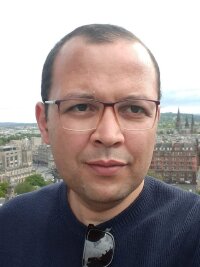A proof of concept for cell-based vaccine production
Knocking out the IFITM locus in chicken fibroblast cell line DF-1 increases the yield of influenza and Newcastle disease viruses; a proof of concept for cell-based vaccine production
This webinar will be jointly hosted by the International Veterinary Vaccinology Network (IVVN) and the International Development Research Centre (IDRC). Our speaker will be Dr Ahmed Ibrahim from The Pirbright Institute, United Kingdom, who will be discussing a project supported by the IDRC's Livestock Vaccine Innovation Fund. The webinar and question-and-answer session will be chaired by Professor Brian Perry on behalf of the IVVN and Dr Illiassou Hamidou on behalf of the IDRC. The webinar will begin at 12:00 GMT (find your local start time here), and will be hosted on Zoom Webinar.
Abstract
The production of many human and livestock vaccines relies on embryonated chicken eggs. However, this manufacturing process has some drawbacks mainly the vulnerability to supply problems. Avian origin immortalized cell lines have the potential to provide an alternative to eggs but are limited by lower viral yield. Interferon-induced transmembrane protein (IFITM) are now well known as broad range of viral restriction factors in vertebrates. Therefore, we used CRISPR/Cas9 gene editing to delete the IFITM locus in chicken DF1 cells. Results revealed, Compared to wild type DF1, higher AIV and NDV LaSota yields. Both correlated with higher infectivity and higher expression of haemagglutinin and fusion protein. IFITM KO specificity was confirmed by restoring viral restriction in edited cells upon expression of IFITM.
Dr Ahmed Ibrahim

Dr Ahmed Ibrahim received his DVM from the faculty of veterinary medicine, Zagazig University, Egypt in 2006 and his Ph.D. in microbiology and immunology from the faculty of Veterinary Medicine, Cairo University, Egypt in 2013. During his PhD he spent six months at the National Institute of animal health, Japan, where he conducted several in vivo experiments to study HPAI-H5N1viruses at the biosafety level 3 facility. Between 2013 and 2015, he was a research scientist at the animal health research institute, Egypt. He joined the reference laboratory for influenza and Newcastle disease virus, Anses, France in 2015, as a postdoctoral scientist. In March 2017, Dr Ibrahim moved back to Egypt where he joined the reference laboratory for Influenza virus, to develop and evaluate multivalent vaccines against circulating influenza viruses in Egypt. In July 2018, he joined the Pirbright institute. He is also affiliated as an honorary senior scientist at the animal health research institute, Egypt. Avian viral diseases, with special reference to influenza viruses, have been his primary research interest for over 12 years. His Current research at The Pirbright Institute focuses on generating cell lines with ablated chIFITMs expression using CRISPR/Cas9 technology and testing them against a wide range of avian pathogens including avian influenza viruses. This approach is believed to increase virus titer in vitro, directly resulting in increased vaccine yields.